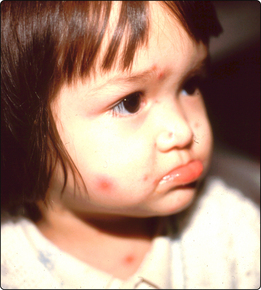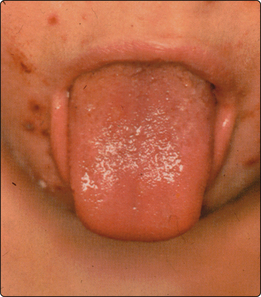19. Viral skin rashes
Viruses cause rashes with four basic components (Fig. 3.19.1):
Macular/maculopapular rashes
The macular/maculopapular rashes are most common in childhood and are not true infections of the skin. Rather they are exanthems (Fig. 3. 19.2), the primary infection occurring elsewhere with the rash as a secondary, probably immune-mediated, phenomenon. The virus cannot be easily, if at all, isolated from the rash. An enanthem (Fig. 3. 19.3), a rash on a mucous membrane, may also be detectable early in the illness; in measles these are called Koplik’s spots and manifest as white flecks on the buccal mucosa. Transmission is by the respiratory route, with upper respiratory tract symptoms being common, if transient.
< div class='tao-gold-member'>
Only gold members can continue reading. Log In or Register to continue
Stay updated, free articles. Join our Telegram channel

Full access? Get Clinical Tree

















